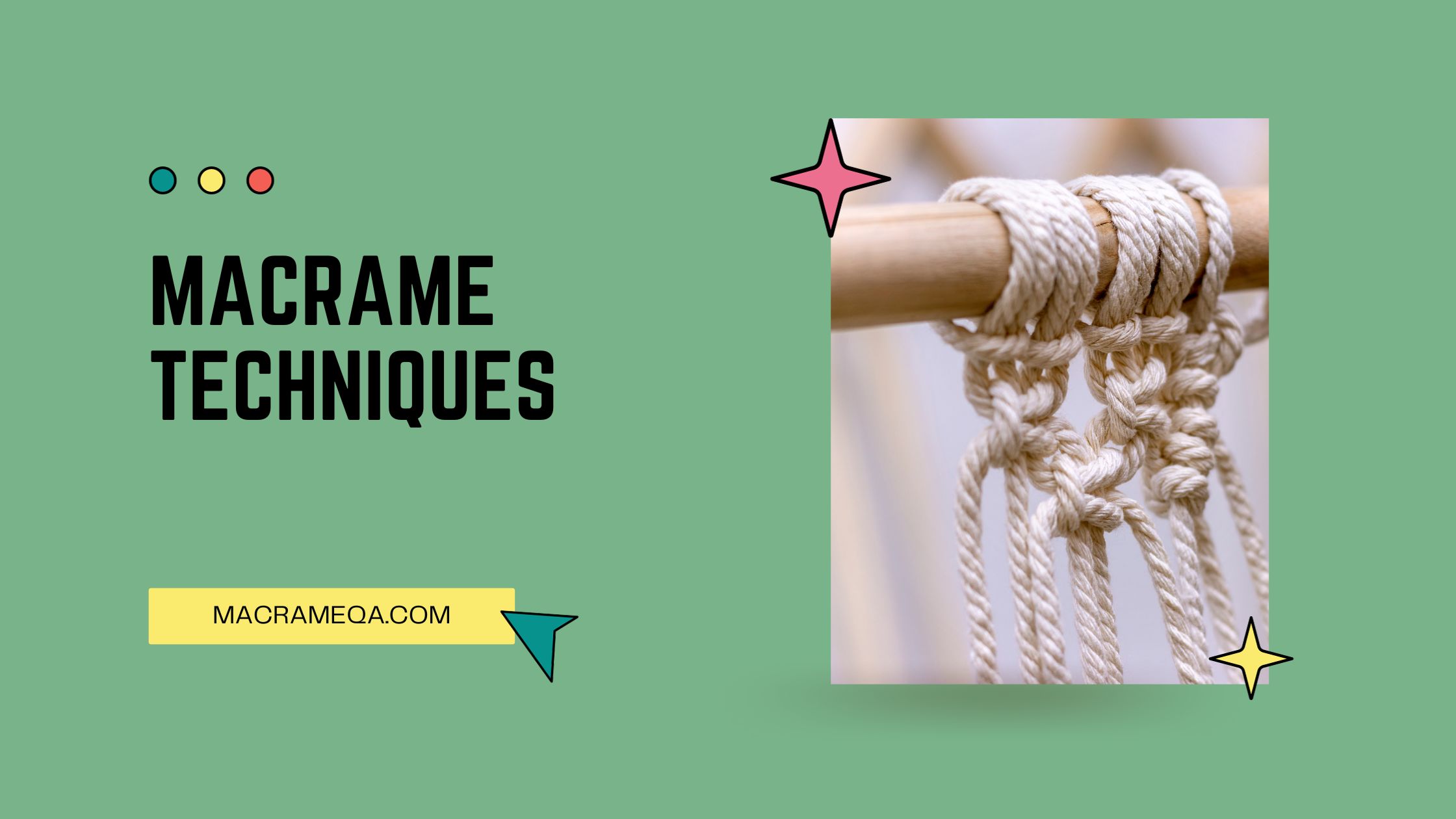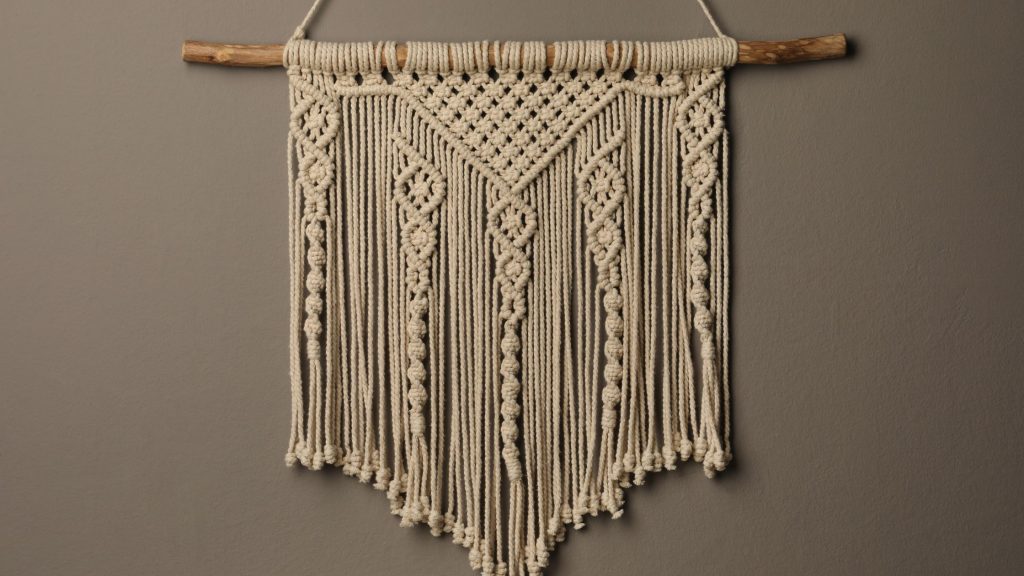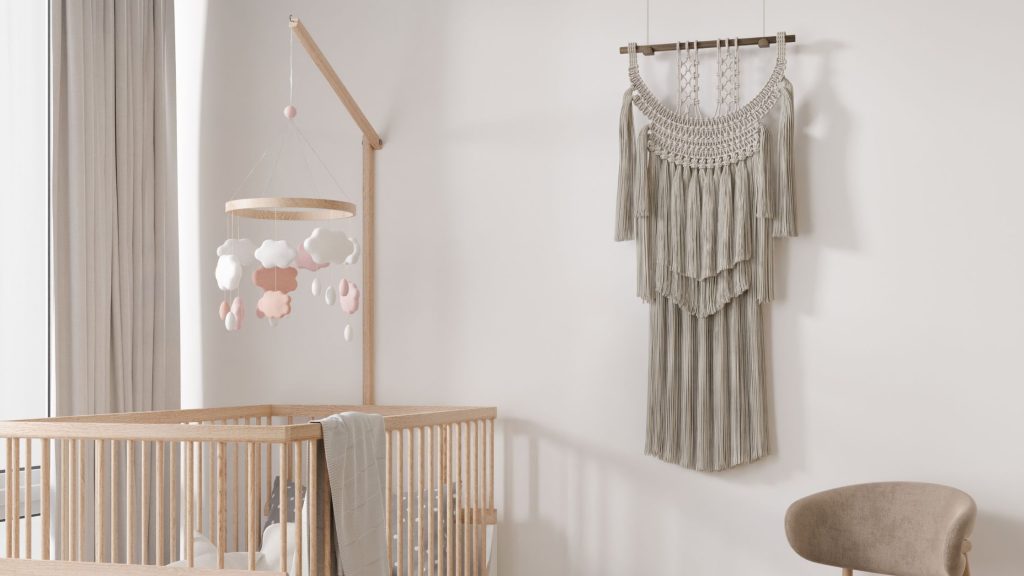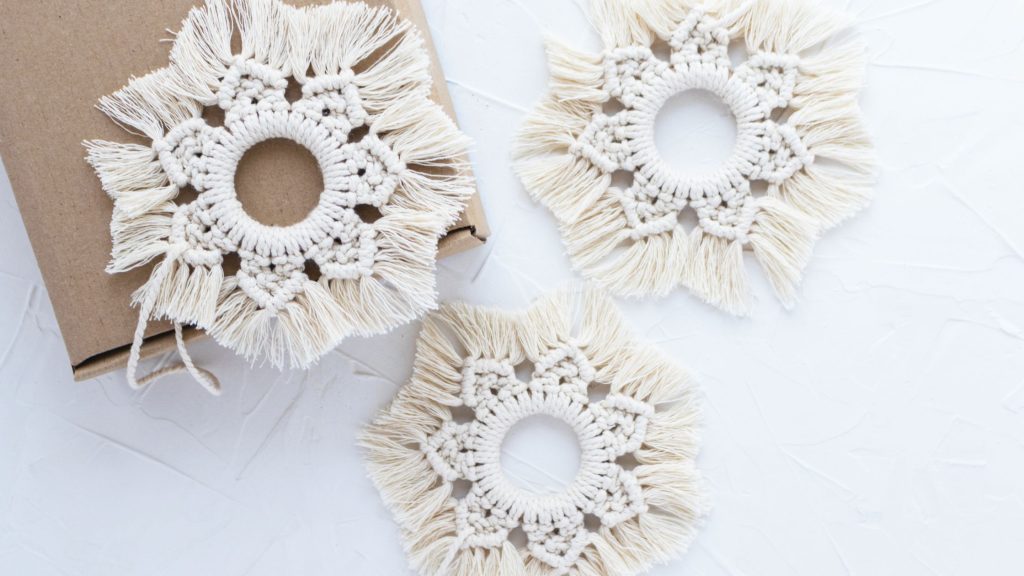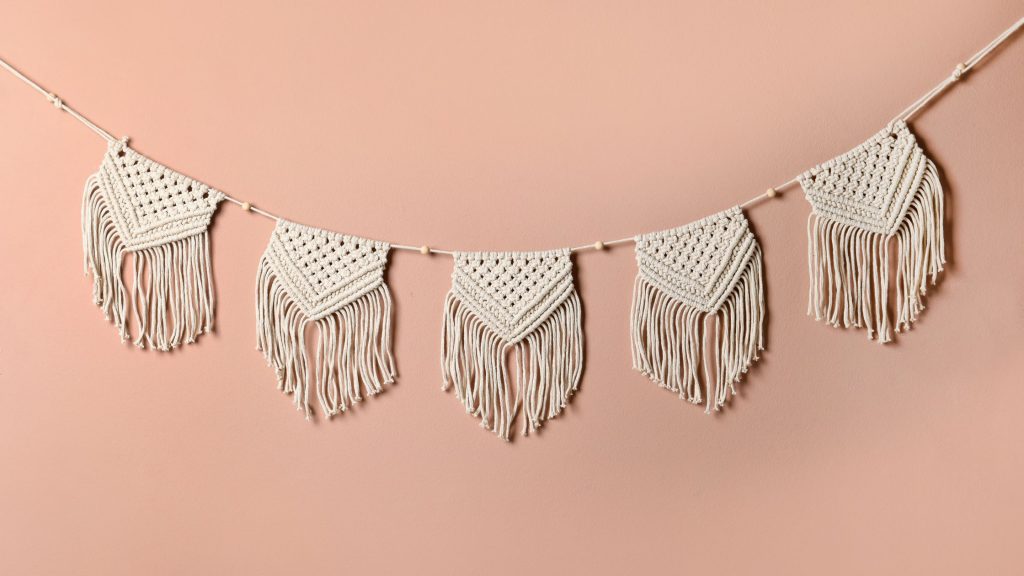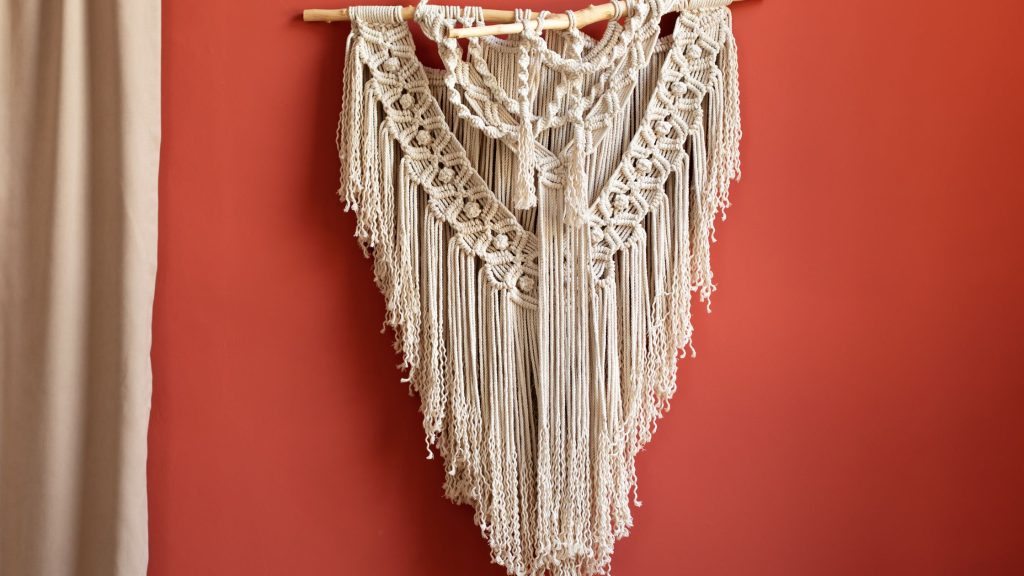Macrame, the ancient art of knotting cords into intricate patterns, has captivated creatives and DIY enthusiasts worldwide. But how exactly did these macrame techniques make their way from one region to another? This article explores the fascinating journey of macrame, from its origins in ancient cultures to its modern manifestation as a global craft. Discover the connections between regions, the exchange of ideas, and the cultural influences that have shaped this beautiful craft as it traversed borders and continents. Whether you’re a seasoned macrame aficionado or simply curious about its history, this exploration promises to unravel the mysteries of its global journey.
Overview
Macrame is a textile art form that involves knotting elaborate patterns from a series of cords or threads. This age-old technique has been used for centuries, and its versatility and decorative qualities have made it a popular craft around the world. In this article, we will explore the ancient origins of macrame, the influence of trade and exploration on its spread, its role in migration and colonization, its impact on traditional costumes and fashion, its connection to arts and crafts movements, the role of media and publications in disseminating macrame techniques, its revival and modern applications, and the importance of cultural exchange and collaboration in the macrame community.
Ancient Origins of Macrame
Earliest Evidence of Macrame
Macrame has a long and rich history, with evidence of its existence dating back thousands of years. The earliest known examples of macrame can be traced back to the ancient Babylonians and Assyrians in the 13th century BCE. Fragments of macrame textiles were discovered in archaeological sites, showcasing the intricate knots and patterns that were created using plant fibers.
Macrame Techniques in Ancient Cultures
Macrame techniques spread across various ancient cultures and regions, including ancient Egypt, China, and Persia. In Egypt, macrame was used to create intricate decorative items such as belts and headdresses. In China, it was utilized in the art of knot-making and formed an integral part of their decorative arts. Persian macrame, also known as “Shamseh”, was used to create intricate wall hangings and was highly valued for its beauty and skillful craftsmanship.
Trade and Exploration as a Catalyst
Macrame along Trade Routes
As trade routes expanded and civilizations came into contact with one another, the art of macrame began to spread. The Silk Road, in particular, played a significant role in the exchange of knowledge and techniques. Macrame, with its portable and easily transportable nature, was a craft that could be shared among traders and their communities, leading to the propagation of macrame across various countries and cultures.
Explorers and their Impact on Macrame Spread
The Age of Exploration in the 15th and 16th centuries brought explorers like Christopher Columbus and Vasco da Gama into contact with new cultures and arts. These explorers encountered the art of macrame in their travels, and upon returning to their home countries, introduced it to their communities. This exchange of knowledge and ideas helped further the spread of macrame techniques throughout Europe and beyond.
Influence of Migration and Colonization
Macrame Techniques in Native American Culture
The indigenous peoples of North and South America have a rich history of using macrame techniques in their crafts. Native American tribes such as the Navajo and the Apache incorporated macrame into their traditional clothing, using intricate knotting patterns to create decorative elements. These techniques were passed down through generations, preserving the art of macrame in the Americas.
Macrame in Europe and Colonial America
During the era of colonization, macrame techniques experienced a surge in popularity in Europe and colonial America. European settlers brought their knowledge of macrame with them to the New World, and the craft spread among the communities in the colonies. Macrame was used to create ornamental pieces, such as curtains and tablecloths, adding a touch of elegance to colonial homes.
Influence of Global Expositions and World Fairs
Macrame Exhibitions and Demonstrations
Global expositions and world fairs held in the 19th and 20th centuries provided platforms for artisans to showcase their crafts to a wider audience. Macrame artists and craftsmen displayed their intricate and beautifully knotted creations, attracting attention and admiration from visitors around the world. These exhibitions and demonstrations not only highlighted the skill and artistry of macrame but also catalyzed its spread and popularity.
Swapping Techniques at International Events
International events such as world fairs and expos also offered a unique opportunity for macrame artisans from different regions to gather and exchange techniques and ideas. Craftsmen and craftswomen from various countries would come together, share their knowledge, and learn from each other’s practices. This cultural exchange played a significant role in the evolution and diversification of macrame techniques.
Macrame in Traditional Costumes and Fashion
Macrame as a Decorative Element in Clothing
Macrame has long been used as a decorative element in traditional costumes and fashion. In many cultures, macrame is intricately woven into garments, adding a touch of elegance and cultural significance. From the fringed edges of Native American dresses to the intricate macrame bodices of European gowns, the incorporation of macrame in clothing showcases its versatility and beauty as an art form.
Fashion Trends and Macrame Influence
Macrame has also left its mark on modern fashion trends. From haute couture runways to bohemian-inspired street style, macrame has become a staple in contemporary fashion. Designers incorporate macrame techniques into their collections, highlighting the craftsmanship and artistic qualities of this ancient art form. The resurgence of macrame in the fashion industry has reinvigorated interest in the craft, inspiring a new generation of macrame enthusiasts.
Transference through Arts and Crafts Movements
Artistic Movements and Macrame
Throughout history, macrame has intersected with various artistic movements such as Arts and Crafts, Art Nouveau, and the hippie counterculture of the 1960s and 1970s. These movements emphasized the importance of handmade crafts and celebrated the beauty of natural materials. Macrame, with its emphasis on handcrafted knots and the use of natural fibers, perfectly aligned with the principles of these artistic movements, further propelling its popularity and revival.
Macrame’s Role in Craft Revival Movements
The revival of interest in traditional crafts in the late 19th and early 20th centuries led to a resurgence in macrame. Craft revival movements, such as the Arts and Crafts movement, sought to revive traditional techniques and values in response to the Industrial Revolution. Macrame played a significant role in this revival, with artisans and craftsmen rediscovering and reimagining the intricate knotting patterns of the past.
Role of Media and Publications
Dissemination of Macrame Techniques through Print
The advent of printing and mass-produced publications played a crucial role in spreading macrame techniques to a wider audience. Books, magazines, and instructional manuals became valuable resources for aspiring macrame artists and enthusiasts. These printed materials provided step-by-step tutorials, patterns, and inspiration, enabling individuals to learn and practice macrame in their own homes.
Macrame Tutorials and DIY Culture
In recent decades, the rise of the internet and the DIY (Do-It-Yourself) culture has further fueled the popularity of macrame. Online platforms, blogs, and video-sharing websites have become havens for macrame enthusiasts, offering a wealth of tutorials, inspiration, and a sense of community. This accessibility and ease of sharing information have contributed to the widespread practice and dissemination of macrame techniques worldwide.
Revival and Modern Macrame
Macrame’s Resurgence in Contemporary Art and Design
In recent years, macrame has experienced a renaissance in contemporary art and design. Artists and designers have embraced macrame as a medium for creating unique, intricate, and large-scale installations. From stunning wall hangings to elaborate plant hangers, macrame has become a sought-after art form, appreciated for its craftsmanship and ability to transform spaces.
Online Communities and Macrame Sharing
The rise of social media platforms and online communities has played a significant role in the revival of macrame. Artists and enthusiasts can now connect, share their work, and exchange ideas on platforms such as Instagram and Pinterest. This global network of macrame lovers has fueled creativity, provided support and feedback, and encouraged the growth and innovation of macrame as an art and craft.
Cultural Exchange and Collaboration
Cultural Workshops and Classes Abroad
Cultural workshops and classes abroad have become increasingly popular, offering individuals the opportunity to learn macrame techniques from experts in different parts of the world. These immersive experiences allow participants to not only acquire new skills but also gain insights into the cultural significance and history behind macrame. Cultural exchange through workshops and classes fosters understanding and appreciation of diverse macrame traditions.
International Macrame Collaborations
The global nature of macrame has also led to exciting international collaborations among artists and artisans. Macrame artists from different countries come together to share their unique techniques, collaborate on projects, and create interconnected pieces that celebrate the diversity and interconnectedness of the macrame community worldwide. These collaborations highlight the power of macrame to bridge cultural gaps and forge new creative paths.
Conclusion
In conclusion, macrame techniques have traveled between regions throughout history, thanks to trade, exploration, migration, colonization, global expositions, fashion trends, arts and crafts movements, media and publications, and cultural exchange. The ancient origins of macrame, its enduring influence on traditional costumes and fashion, its connection to artistic movements, the role of media in disseminating techniques, the revival and modern applications of macrame, and the importance of cultural collaboration have all contributed to the spread and continued popularity of this beautiful art form. Macrame’s ability to transcend boundaries and bring people together is a testament to its enduring appeal.

